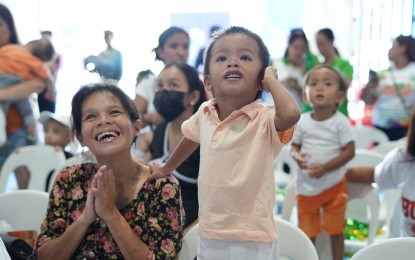ILOILO CITY – The city government has piloted the “PuroKalusugan” program of the Department of Health in three barangays in the Arevalo district.
“This is their grassroots campaign to bring health services down to the barangay. While our district health centers are open every day, I think this is more convenient for our people,” a city official said in an interview.
The program is designed to “complement, not replace, the existing health measures implemented by local government units,” according to a DOH memorandum circular.
The community-based health initiative emphasizes preventive care, disease prevention, and health interventions, addressing eight priority areas, including proper nutrition, maternal and child health, adolescent health, and environmental sanitation.
The launching ceremony at the regional evacuation center in Barangay So-oc benefited around 200 residents, including those from two other pilot sites — Barangays Sto. Niño and Calaparan — as per initial data.
A WASH (water, sanitation and hygiene) corner, immunization lounge, teenage pregnancy booth, and nutrition station, among others, were established to accommodate residents of the barangays.
“They intend to make it more frequent. It is like a mobile medical consultation, but it has plenty of services. It is a mini-health fair, so our people will be encouraged to avail of medical consultations,” the official said.
During the ceremony, stakeholders also signed a commitment to champion the inclusive, accessible and community-based initiative.
Health officials were present during the event.
Arevalo district
The Arévalo district is a historic quarter in the city of Ávila, Spain, known for its well-preserved medieval architecture, including mudéjar churches and the ruins of a castle. Its history dates back to the Middle Ages when it served as an important defensive and commercial hub in the region. The area is also famously linked to Queen Isabella I of Castile, who spent part of her childhood there.
Iloilo City
Iloilo City is a historic port city on Panay Island in the Philippines, once a major center for the sugar and textile industries during the Spanish colonial era. It is renowned for its well-preserved heritage mansions and the iconic Miagao Church, a UNESCO World Heritage Site. Today, it is a vibrant urban center celebrated as a UNESCO Creative City of Gastronomy.
Barangay So-oc
Barangay So-oc is a barangay (the smallest administrative division) in the municipality of Arevalo, located within Iloilo City on the island of Panay in the Philippines. Historically, the area was part of the ancient settlement that grew under Spanish colonial rule, with its local church, the Santo Niño de Arevalo Church, being a significant historical landmark dating back to the 16th century.
Barangays Sto. Niño
Barangays Sto. Niño are administrative divisions found in various municipalities and cities across the Philippines, named in honor of the Santo Niño (Holy Child Jesus), a central figure in Filipino Catholicism. Their history is often tied to the country’s Spanish colonial past, when many communities were founded and named by Spanish missionaries. Today, these barangays are vibrant local communities that often host annual fiestas celebrating the Santo Niño.
Calaparan
I am unable to find any verifiable information on a place or cultural site named “Calaparan.” It is possible the name is misspelled, highly localized, or refers to a very minor location not widely documented in historical or cultural sources. Could you please double-check the spelling or provide any additional context?
regional evacuation center
A regional evacuation center is a designated public facility, such as a school or community hall, that provides temporary shelter and safety for residents displaced by emergencies like natural disasters. These centers are a modern part of civil defense and emergency management protocols, established to protect communities from imminent threats. Their history is tied to the development of organized disaster response, evolving from ad-hoc shelters into standardized, pre-planned facilities.






